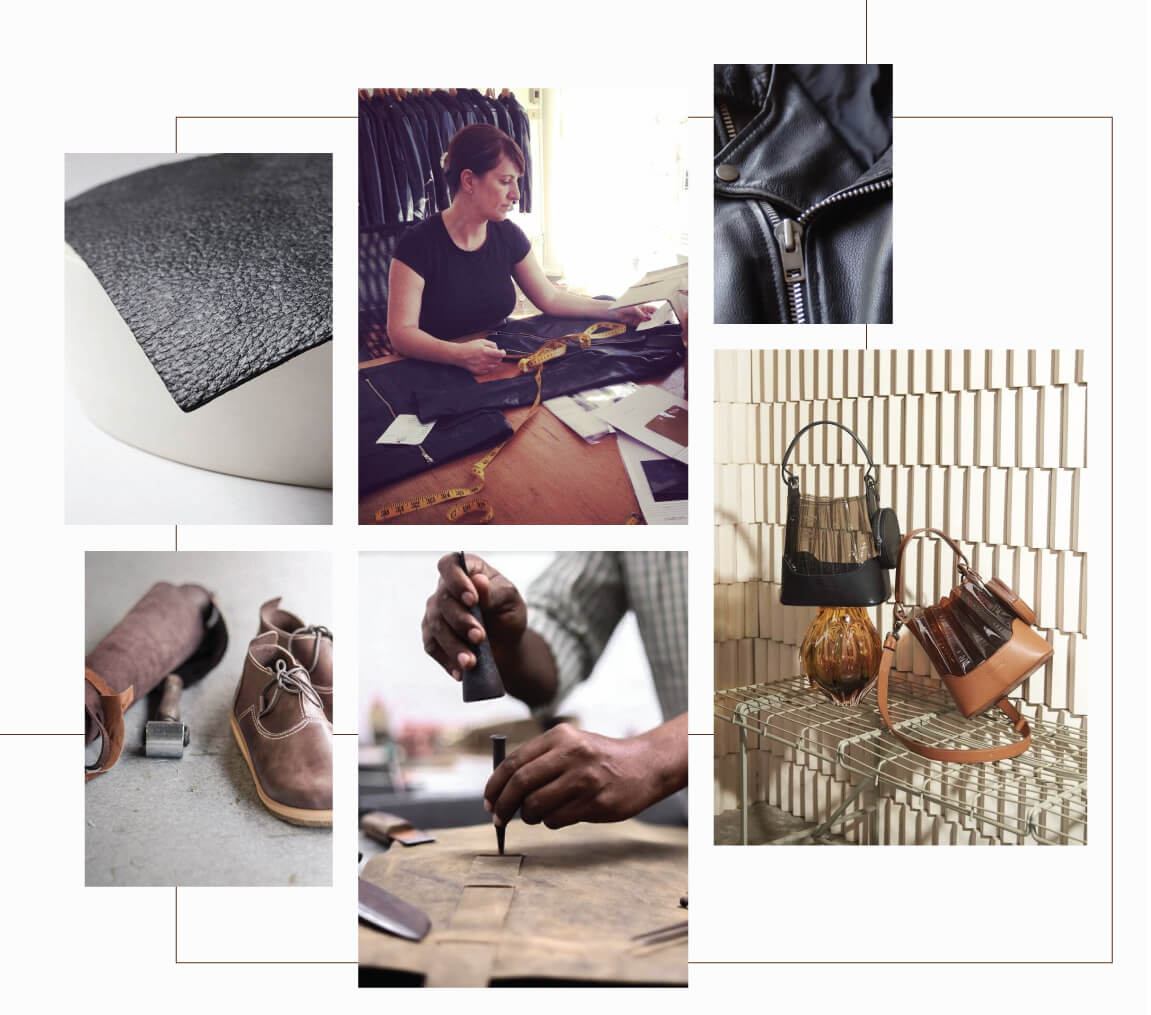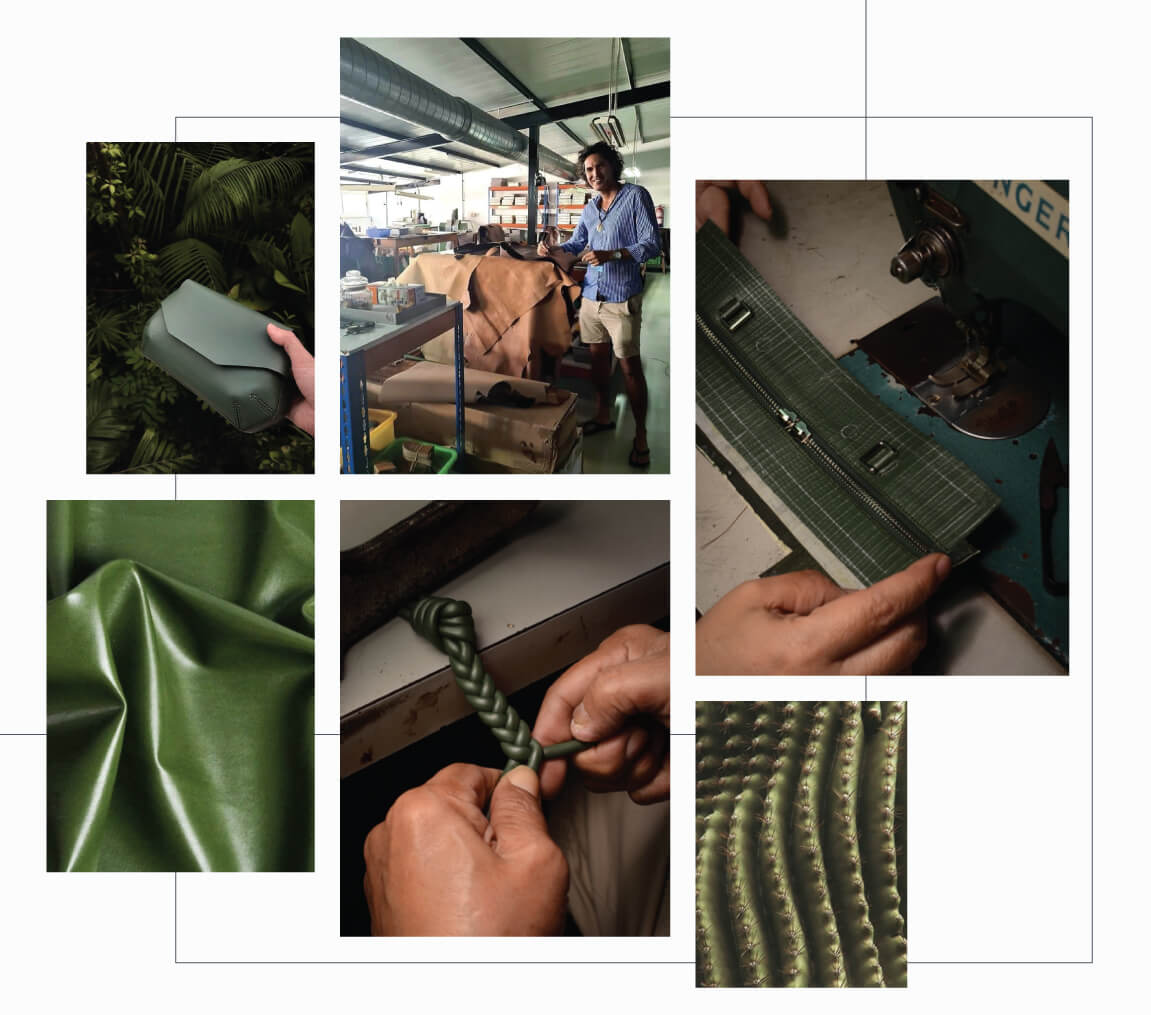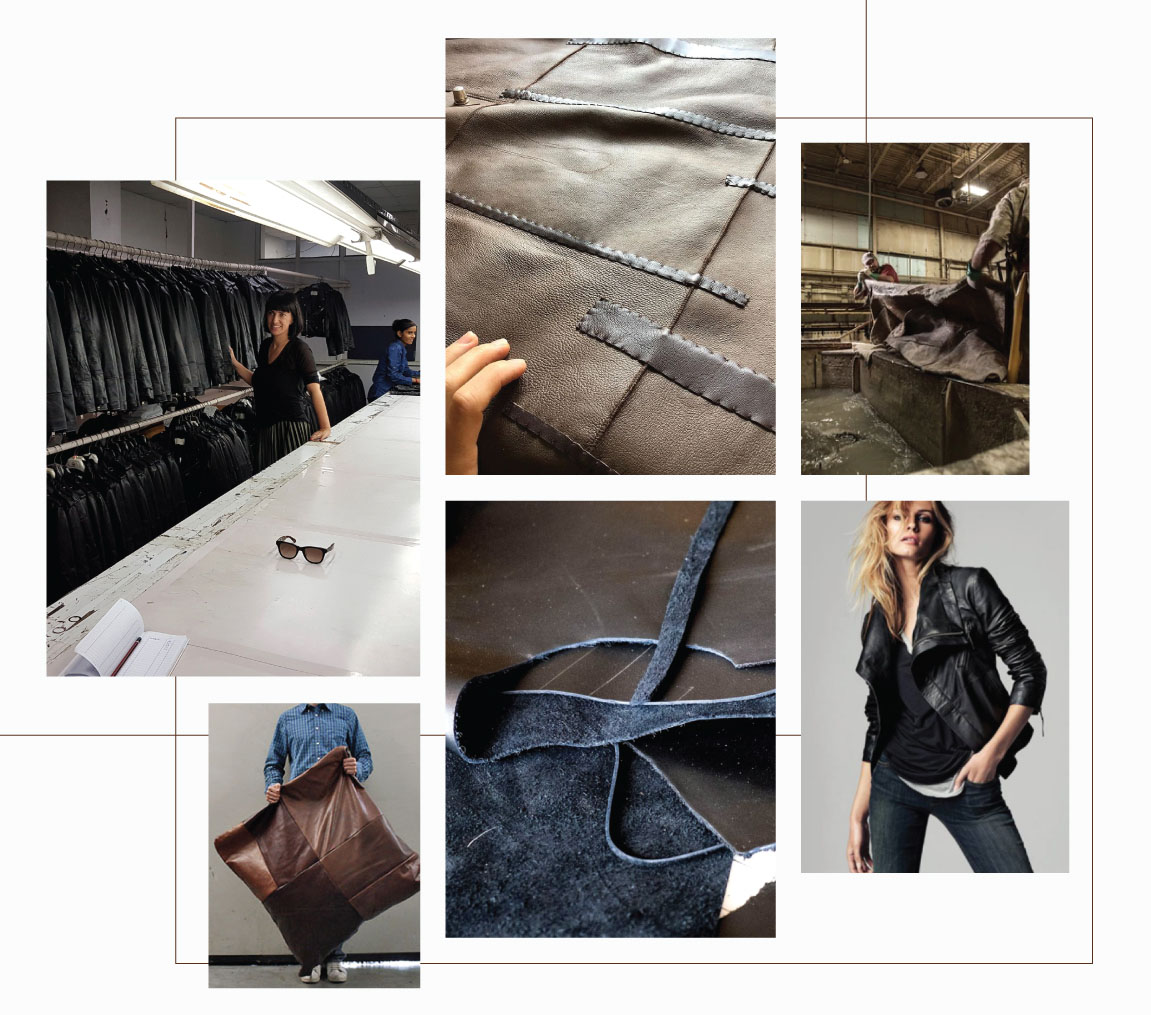
Leather has had a long-standing pedestal in the history of the world being the first fabric humans ever learned to use. Leather has always had a unique mix of tough and resilient yet royal and expensive touch to it, Especially with luxury fashion, accessories, and lifestyle products. People considered buying leather an investment, treated like a treasure that traveled down from one generation to the other. But recently this idea has been flickering with worldwide opinions shifting towards conscious buying and sustainability, focussing on the impact of the processes on the environment, resources consumed and the life cycle of the product.
Every day new materials are being discovered as an alternative approach to this dilemma. While new plant-based leather options sound attractive, It is important to understand the truth behind working with them.

What exactly is vegan leather?
Vegan leather is simply a material that mimics the looks and properties of real leather without the use of any animal products. It is most commonly seen made from two plastics, Polyvinyl Chloride (PVC) or Polyurethane (PU) as both of them have that signature wrinkled look that gives the illusion of real leather. Apple leather, Cork leather, Mushroom leather, Cactus leather, and so many other new Vegan plant-based leather options are being introduced in the market.
When analyzing if vegan leather is sustainable or not, it is essential to analyze how its made and what its made of, Not all vegan leathers are sustainable or realistic to use.
As stated earlier, some vegan leather products have a synthetic source (Plastic), which can take years to decompose, and also cause harm to the wearer due to the presence of micro-plastics in them. Some other vegan leathers do have an organic source and are safer to use, but as far as we have learned from our years of experience with so many sourcing projects in the past, these materials are still in the development stage, not commercial enough, and cannot be relied on for consistent production. While vegan leather materials do mimic the appearance of actual leather, their life-cycle is comparatively short-spanned, which prompts more production and in turn more contribution to the landfills.
Most people think it’s the ‘woke choice’ simply because it has the term “Vegan” associated with it, but they aren’t really trying to understand if that material caters to their needs and their sustainable goals. Greenwashing is a common term now where most companies use buzzy/ viral words to market only one aspect of sustainability, It is essential to do the research on the factories and the eco-friendly vegan leather materials to invest in, and try to understand if the end product as well as the process to make it both align with your goals.

Is Leather completely unsustainable?
It is important to understand that while leather has its own cons, Leather also has one of the longest product life cycles of most known materials, which makes its contribution to the landfills very minimal. So many leather heirlooms get handed over generations after generations, making one aspect of using leather extremely sustainable.
While these points do make sense we are also not invalidating the fact that processing leather does have a major impact on the environment. This is why we at Deepwear also have factories that go the sustainable route with leather. Ethically sourced leather treated with vegetable tannins is much more environmentally friendly when compared to its chemically tanned counterparts. Not only does leather tanned with vegetable tannins not contribute towards polluting the environment with more toxic chemicals, some tanneries also source their raw materials from the food industry, utilizing the waste leading towards a closed fashion life-cycle.
Another possibility when it comes to conscious leather options is Recycled leather, we have a few factories around the world that source stocks of second hand or unused leather jackets by the kilo, cut those jackets, retrieve all the usable materials, create square patches and reconstruct new products from that leather-like Leather jackets, bags, and accessories.
We also have upcycled leather factories that source leftover leather also have upcycled leather factories that source leftover leather from Leather garments factories, reconstruct it to make new products like leather handbags, leather shoes, leather accessories, etc, again bringing our contribution to the landfills down.

Which leather to choose?
The final answer to the question “ Should we buy leather? or should we invest in its vegan alternatives?” cannot be black or white. We want people to understand that while dealing with leather, it is not the actual hide that is harmful to the environment, but rather the chemicals it is treated in so if you are buying real leather try understanding the process and choose for more environmentally friendly processes like vegetable tanning, as for people who avoid leather due to moral/personal beliefs, vegan options are a good choice, and if you want to opt for vegan leather products, make sure you study and understand the process to know if it truly is sustainable or not and see if their properties align with its end users.
The debate is not as simple as actual leather vs its alternatives, it all stems down to your personal goals, choices, and moral principles. No matter what you choose, we at Deepwear will always be there to assist you. And if you are confused, feel free to contact us, and we will do all the background study for you, to help you decide better.
To know more about the possibilities of sourcing and manufacturing leather products or vegan leather products click here.